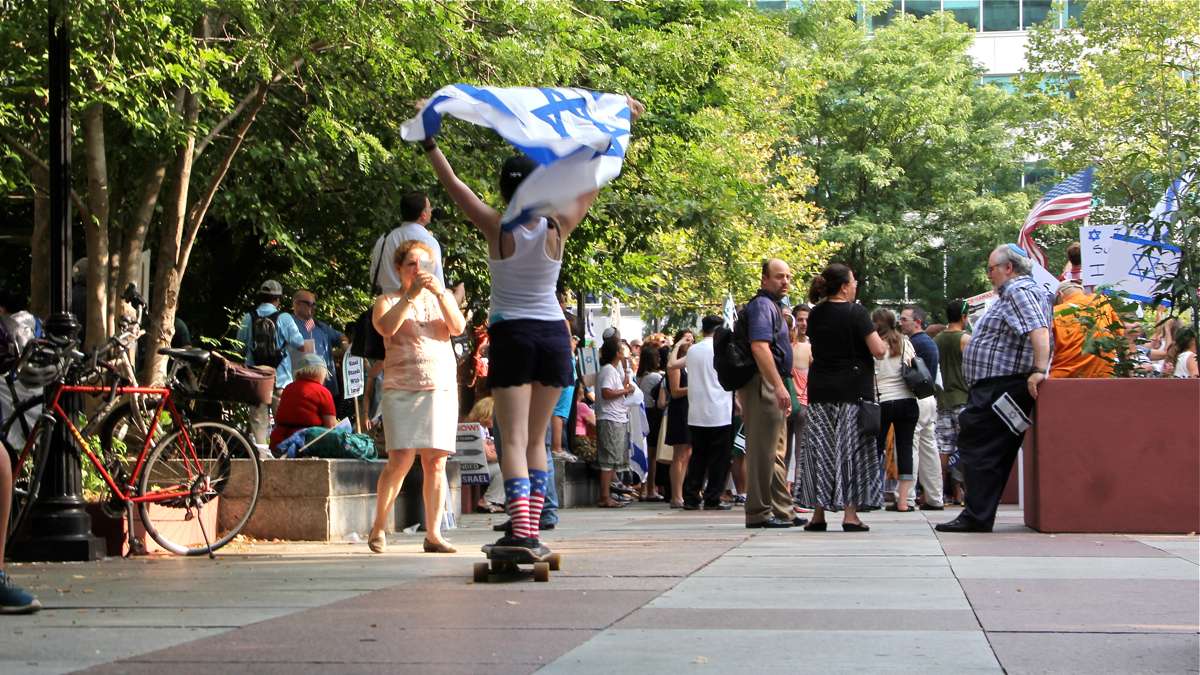This is what happens when a fight breaks out on a SEPTA bus
The Saturday night ride from Fairmount Park to Center City on the 61 bus began normally: people crowding on and off at each stop, the hiss and thud of the doors, and a nice blue-haired lady giving a sermon about Jesus.
But the trouble started when a mom with four kids, the oldest about 5 and the youngest an infant, boarded alongside a scruffy dude in a baseball cap.
“Don’t you touch my son!” she yelled at him as she took a seat opposite the back door.
“I was just trying to help,” he shot back, standing near her.
As they began to screech insults at each other, I pretended I wasn’t four feet away, and I feigned deep interest in a pamphlet about Abraham and Isaac. I’d seen my share of SEPTA incidents.
In my experience, the 23 bus is one of the most volatile rides in the city. Once, all the ladies within reach tried to ignore the leers of an inebriated man who “hid” his giant beer can under his tight white t-shirt between sips. Eventually, he moved to block the doorway, refusing to disembark, but announcing to everyone that he had to piss.
Another time, a woman flashed between screaming vicious curses at everyone and attacking the man right behind me. Her saliva spattered my crossword as she slapped him repeatedly (similar to the attack on NewsWorks photographer Bastiaan Slabbers).
On the 61 that night, the argument was worsening. The man and woman kept insulting each other over the heads of the two toddlers clinging to the woman’s legs.
“F**k you!” he screamed.
“You can’t,” she answered.
“I wouldn’t want to.”
“I am a married woman. You couldn’t get no wife.”
“I could get a wife if I wanted one.”
“No you couldn’t, with your toothless self.”
They subsided, and everyone else breathed embarrassment and relief.
Then the woman narrowed her eyes and leaned forward.
“F—-t,” she spat.
The shouting began again.
“You want to go? Touch me and see what happens,” the mother goaded, pushing her infant’s stroller to the side in readiness for a punch.
Then she gathered her kids and prepared to exit, but the man, standing by the back door, put his foot down to block the stroller’s wheel. Now they were cursing nose-to-nose as she repeatedly slammed the stroller against his foot, heedless of the infant hitting the stroller’s front bar.
“Get your foot out my way,” she screamed.
“Roll over it, bitch!” he screamed back.
Desperately I wondered if the bus driver could help. My hands shook and I tipped to the edge of my seat, eyes prickling, longing to grab the baby and fearing I’d make things worse.
Then the combatants lunged at each other. The oldest child banged her forehead in the commotion, clapped a hand to her hairline, and sobbed. A man sitting behind us, who had tried to intervene verbally, grabbed the angry man. The two men attacked each other in the front aisle of the bus.
I dialed 911.
“9:31 is when the first punch was thrown,” SEPTA assistant general manager of operations Ron Hopkins told me a few weeks later, after I reached out for this story. “And that’s when everybody started screaming and scattering throughout the vehicle.”
Not that there’s an audio recording of that.
Hear no evil
“We have video on every one of our vehicles,” Hopkins said, but no sound. This means that, in the eyes of SEPTA, incidents like this one don’t officially begin until someone throws a visible punch, regardless of any screaming matches that might precede it.
Of course SEPTA doesn’t encourage abusive language, Hopkins said, but there’s nothing they can do about it: “Quite frankly, the audio on all our buses would be pretty bad.”
Drivers, who are trained not to intervene in any potentially violent situation, “can tell people to keep it down, but [they] cannot enforce that.”
Fights in the loud, jolting, crowded no man’s land behind the bus driver can be frightening, but Hopkins wants to put that in perspective.
Pooling information from the SEPTA control center, the surveillance video, and the Police Department, Hopkins called the aftermath of this particular fight “a very reasonable and actually very good response.”
That’s because the punches began at 9:31, the operator issued a “priority” alert requesting police dispatch from SEPTA controllers at 9:34 (though the riders didn’t know it), I called 911 at 9:35 (dialing just before the driver ordered everyone off), and officers were on the scene at 9:38. No one was arrested.
A high-pressure job
While assaults and other crimes may endanger SEPTA passengers or the operators themselves, Hopkins emphasized that bus drivers aren’t police officers.
“The primary responsibility of that driver is handling a 20-ton vehicle, through narrow streets, with 40-plus people in it.”
It’s a high-pressure job any day, because the driver has to look out for riders as well as everyone around the bus. That means watching for pedestrians and swerving cars and bikes, but avoiding sudden stops that might injure bus passengers. This job has only gotten harder, Hopkins noted, as people walk around with earbuds in, heads bent over smart phone screens, not looking where they’re going.
So in the case of that fight on the 61, the driver did the right thing by staying out of it and alerting the control center, where Hopkins says bus controllers sit right next to SEPTA police dispatchers.
‘Very good response’
How common are these incidents?
Hopkins said SEPTA’s bus control center handles about 20,000 calls per month. He crunched the numbers for the last three months on the more serious codes (requiring SEPTA police), including objects thrown at a bus, intoxicated passengers, assaults or robberies of passengers or operators, and fights. That made 250 calls in April, 290 in May, and 250 in June.
If you include passenger calls to the Philadelphia Police Department about trouble that operators may not be aware of on or around buses, including disorderly conduct, loitering, or possible drug use, that’s 369 incidents in April, 409 in May, and 462 in June, Hopkins said.
In other words, operators can’t call police “every time people [are] screaming and yelling,” and the bus drivers’ job means keeping their eyes on the road, not scrutinizing a potentially violent situation behind them.
Hopkins insisted that the seven minutes between the 61 bus driver’s call and the arrival of the police constitute a good demonstration of SEPTA at work.
“We really believe that our system is a safe system. We have a lot of measures put in place to protect the safety of our passengers and the public,” including, he said, about 8,000 bus security walk-throughs per month from SEPTA and Philadelphia police officers.
But in my experience, it’s tough for everyone to pinpoint the line between ugliness that riders just have to endure, and a situation that requires police back-up. In my case, children at risk compelled me to make the call — though I was seconds from trying to shield the youngsters myself.
“We don’t encourage riders to take matters into their own hands,” Hopkins said, advising that anyone who senses danger on the bus should call the police, or verbally alert the operator, who can contact dispatchers if needed.
But fights escalate fast, and the 61 bus incident was not the first time I’ve seen another rider leap to the physical defense of a stranger when an altercation, or a person visibly under the influence of some substance, posed an immediate threat.
It’s a short amount of time, but if you’re trapped in a melee on wheels, unable to run and praying that nobody has a weapon, three minutes between the first punch and a call for help can feel like an eternity. The next time a fight on a SEPTA bus heads for you, what will you do?
WHYY is your source for fact-based, in-depth journalism and information. As a nonprofit organization, we rely on financial support from readers like you. Please give today.













